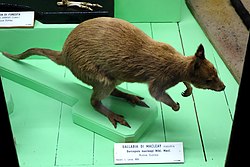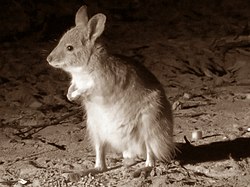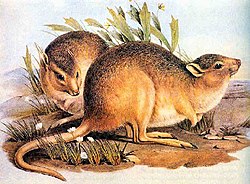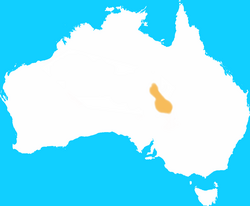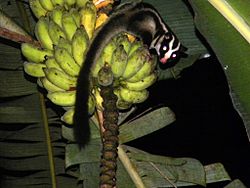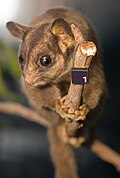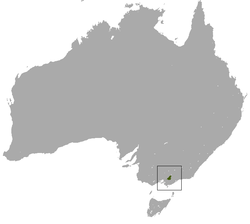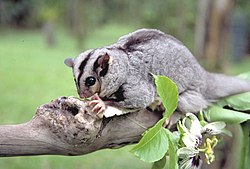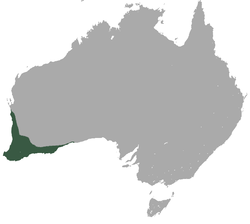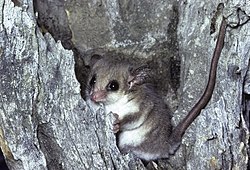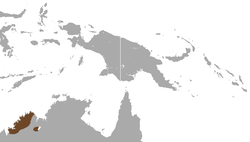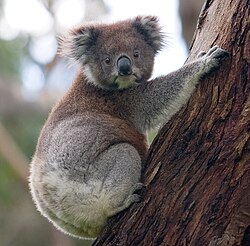
Diprotodontia is an order of Australian marsupial mammals. Members of this order are called diprotodonts. Diprotodontia is the largest order of marsupials and currently comprises 140 extant species, which are grouped into 39 genera. They are found in Australia, New Guinea, and Indonesia, in forests, shrublands, grasslands, and savannas, though some species are found in deserts and rocky areas. They come in a wide array of sizes, ranging from the Tasmanian pygmy possum, at 5 cm (2 in) plus a 6 cm (2 in) tail, to the red kangaroo, at 160 cm (63 in) plus a 120 cm (47 in) tail.
Contents
- Conventions
- Classification
- Diprotodonts
- Suborder Macropodiformes
- Suborder Phalangeriformes
- Suborder Vombatiformes
- References
- Sources
Diprotodontia is subdivided into three suborders: Macropodiformes, Phalangeriformes, and Vombatiformes. Macropodiformes has 72 species in 3 families: Hypsiprymnodontidae, Macropodidae, and Potoroidae, and includes kangaroos, wallabies, bettongs, potoroos, and rat-kangaroos. Phalangeriformes has 64 species in 6 families: Acrobatidae, Petauridae, Pseudocheiridae, Tarsipedidae, Burramyidae, and Phalangeridae, and includes cuscus and the brushtail, ringtail, and gliding possums. Vombatiformes has only four species in two families: Phascolarctidae, the koala, and Vombatidae, the wombats. The classification of species in the order is not fixed, with many recent proposals for changes made based on molecular phylogenetic analysis. Additionally, the present set of suborders was created beginning in 1997 by splitting the former suborder Phalangerida into Macropodiformes and Phalangeriformes, and further reorganizations have been proposed. [1]
In addition to the extant species, eight species in the suborder Phalangeriformes—four in the family Macropodidae and four in Potoroidae—have been made extinct in the modern era, all between the 1880s and the 1940s after the colonization of Australia began: the broad-faced potoroo, crescent nail-tail wallaby, desert bettong, desert rat-kangaroo, eastern hare-wallaby, Lake Mackay hare-wallaby, Nullarbor dwarf bettong, and toolache wallaby. Dozens of extinct, prehistoric Diprotodont species have also been discovered, though due to ongoing research and discoveries the exact number and categorization is not fixed. [2]




